The Samsung 750 EVO (120GB & 250GB) SSD Review: A Return To Planar NAND
by Billy Tallis on April 22, 2016 8:00 AM ESTATTO
ATTO's Disk Benchmark is a quick and easy freeware tool to measure drive performance across various transfer sizes.
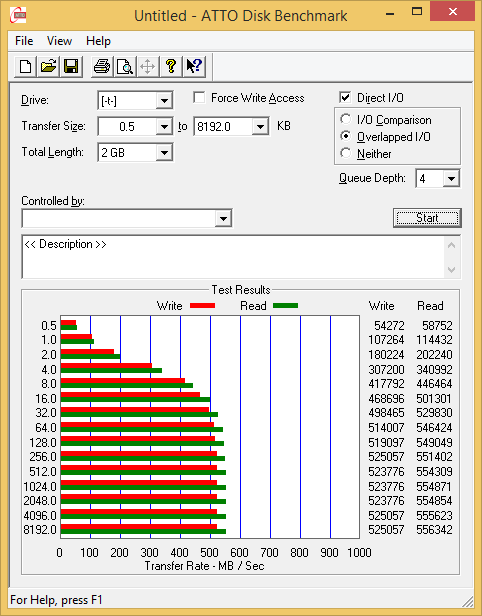 |
|||||||||
The ATTO benchmark shows the 750 EVO has good performance on small transfers and a maximum write speed that is very close to the read speed. The 120GB 750 EVO even provides better write speeds than the 850 Pro 128GB thanks to the former's SLC write caching.
AS-SSD
AS-SSD is another quick and free benchmark tool. It uses incompressible data for all of its tests, making it an easy way to keep an eye on which drives are relying on transparent data compression. The short duration of the test makes it a decent indicator of peak drive performance.
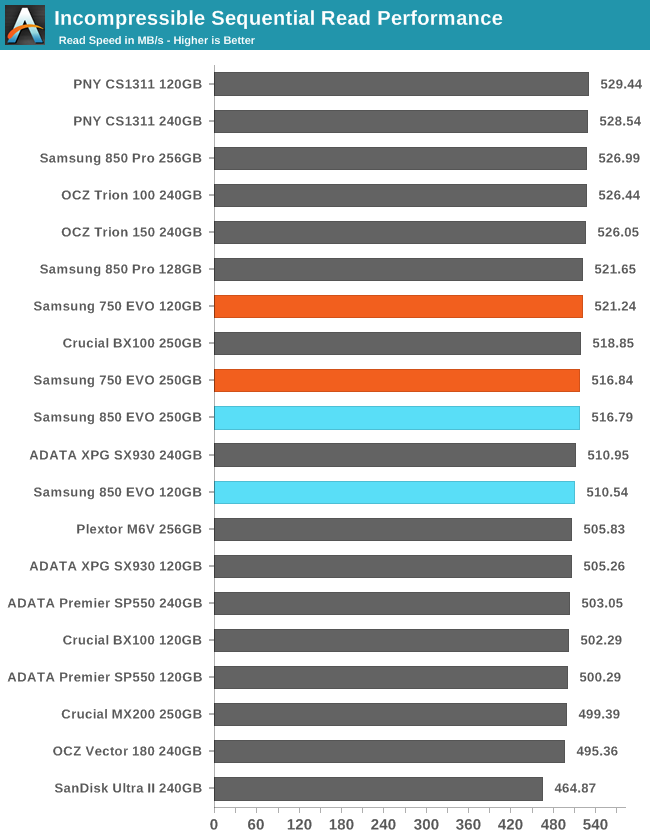
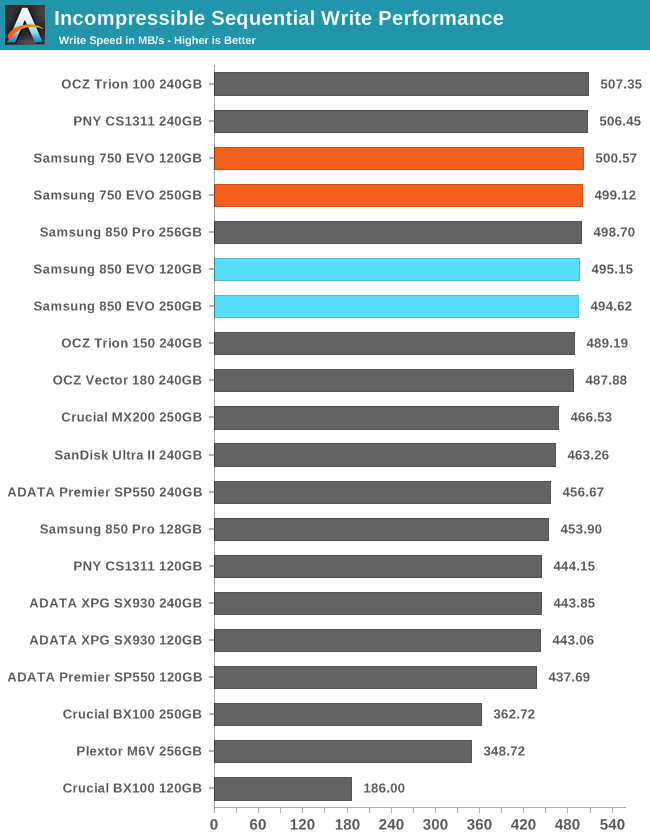
The 750 EVO provides top-notch burst speeds for reads and writes. The write speeds in particular distinguish the 750 EVO from most other TLC drives and low-end MLC drives that suffer from a lack of parallelism at small capacities.
Idle Power Consumption
Since the ATSB tests based on real-world usage cut idle times short to 25ms, their power consumption scores paint an inaccurate picture of the relative suitability of drives for mobile use. During real-world client use, a solid state drive will spend far more time idle than actively processing commands. Our testbed doesn't support the deepest DevSlp power saving mode that SATA drives can implement, but we can measure the power usage in the intermediate slumber state where both the host and device ends of the SATA link enter a low-power state and the drive is free to engage its internal power savings measures.
We also report the drive's idle power consumption while the SATA link is active and not in any power saving state. Drives are required to be able to wake from the slumber state in under 10 milliseconds, but that still leaves plenty of room for them to add latency to a burst of I/O. Because of this, many desktops default to either not using SATA Aggressive Link Power Management (ALPM) at all or to only enable it partially without making use of the device-initiated power management (DIPM) capability. Additionally, SATA Hot-Swap is incompatible with the use of DIPM, so our SSD testbed usually has DIPM turned off during performance testing.
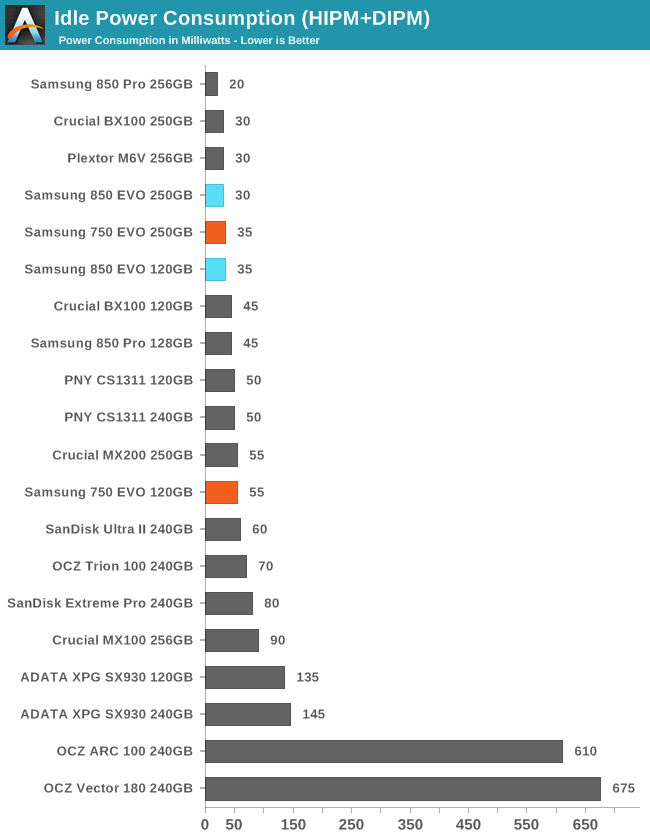
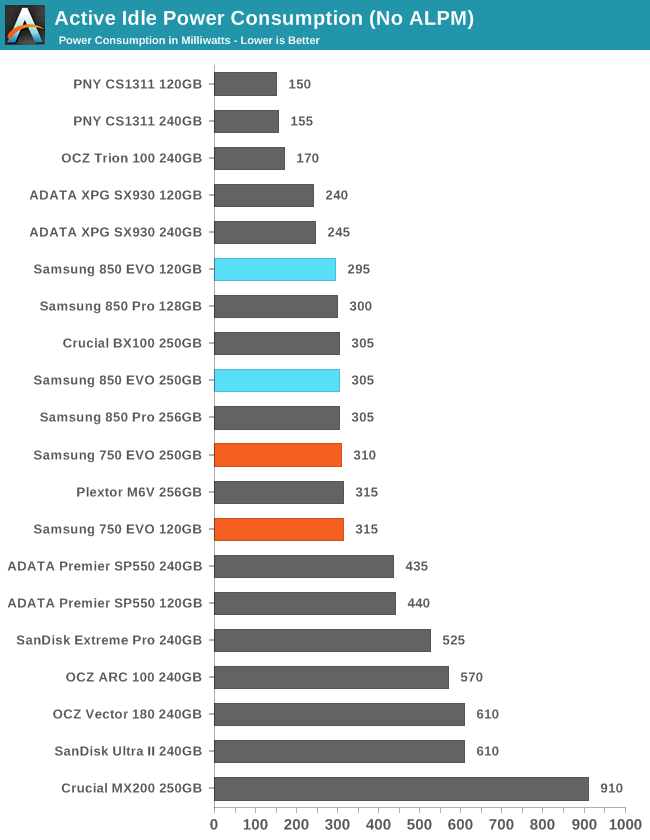
Idle power consumption of the 750 EVO is comparable to other Samsung drives: great when ALPM is enabled, and average when it is disabled.










109 Comments
View All Comments
Bleakwise - Sunday, April 24, 2016 - link
I apologize for being rude but that's just not what they are made for. Paying 1,000$ for a 2tb NVME SSD just for cold storage is a lot like buying a 500,000$ super-car just to drop your kids off at school....Bleakwise - Sunday, April 24, 2016 - link
More like even up to 8k.A mechanical hard drive will roll out 150-200 GigaBYTES per second sequential read. 4k video is like 5 megaBYTES per second max. 8k would be 20, 16k would be 80. This is on h264, h265 will cut these in half, so you could watch a 32k video on something like a WD black.
I suppose if you wanted to play back something in 64k resolution you'd need an SSD though, at least until CPU/GPU tech makes h266 or h267 codec or whatever available.
Bleakwise - Sunday, April 24, 2016 - link
To be clear. The only reason content creators need NVME drives for 4k is because they work in uncompressed or intermediate formats. They need NVME drives for the same reason that a 4k bitmap is like 22 megabytes while the JPEG is just one or two.Eden-K121D - Sunday, April 24, 2016 - link
I think You meant MegaBYTES otherwise your hypothetical disk would be faster than anything on this planet LOLslowdemon21 - Friday, April 29, 2016 - link
SeaGate barracuda 195 MegaBytes per secBrokenCrayons - Friday, April 22, 2016 - link
Between the OS and software, my Windows desktop is currently using about 110GB of a 250GB hard drive. I don't game much, but there are handful of titles loaded on that system and I haven't exactly been working very hard at keeping my drive clean.On my primary computer (the desktop is more a network appliance than a day-to-day workstation as it runs headless now thanks to a combination of Steam in home streaming and VNC), a laptop with a 60GB SSD, there's about 35GB of free storage capacity, but the OS footprint is a lot smaller since it's a Linux box.
Granted, games are getting larger and a few newer titles I'm likely to play in the next year or so will make it necessary to start looking at more storage, but 250GB seems perfectly reasonable right now.
jabber - Friday, April 22, 2016 - link
Yeah just running 80GB of the 250GB 850EVO in my workstation. Having masses of software and data hanging around on a mchine seem crazy to me. Each to their own. However, most customers I see struggle to go over 60-70GB.bji - Friday, April 22, 2016 - link
This is because you guys don't pirate tons of movies and hoard them on SSD drives like some people who then complain about the cost of the media they use to store their pirated goods. I don't either, which is why the 250 GB SSD in my macbook pro is still only half full after nearly 4 years of use.bji - Friday, April 22, 2016 - link
BTW complaining about the cost of storage for pirated goods is like the ultimate douchebaggery imagineable. Not only are you ripping off people who worked to create the content you've pirated, you want to complain about how much money you have to pay to companies to produce the storage that you need to store it.StrangerGuy - Friday, April 22, 2016 - link
That's not ultimate pirate douchebaggery, it would be complaining why pirated videos are no longer available in Xvid because everybody should cater to people with decade old DVD players.